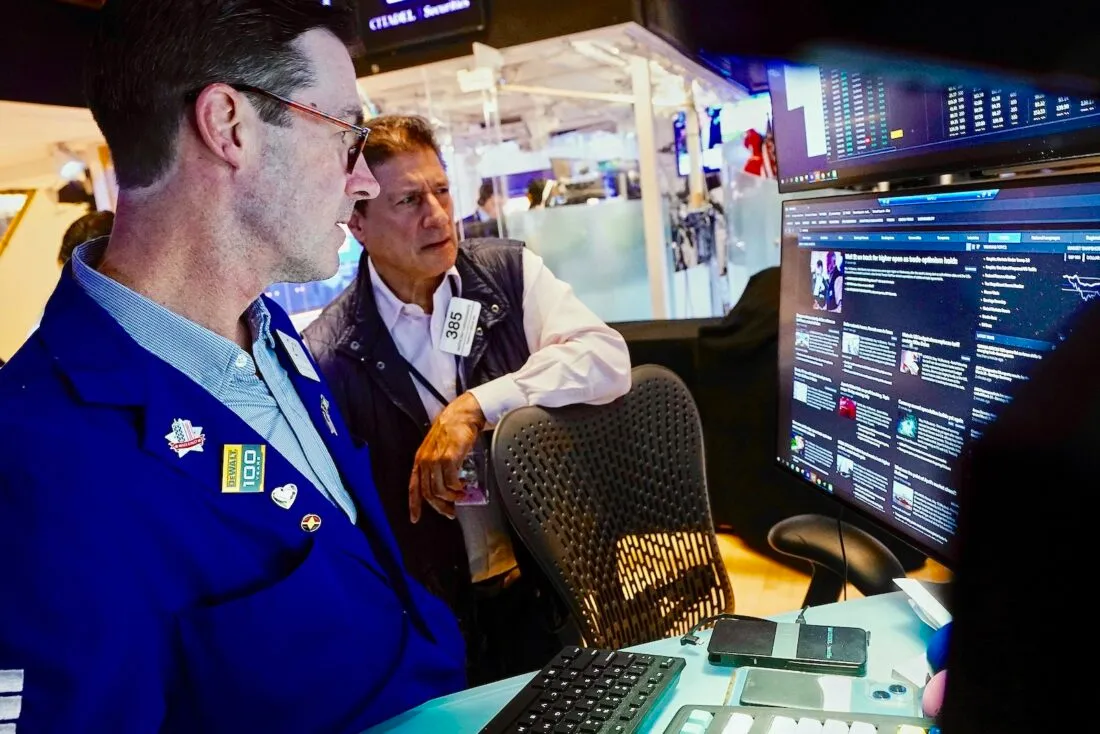U.S. equities stumbled out of the gate in October, weighed down by concerns over a government shutdown that fueled a wave of risk aversion among investors.
The S&P 500 slipped 0.2% on Tuesday, giving back some momentum after notching its strongest September performance since 2010. The tech-heavy Nasdaq 100 fell 0.3% shortly after the opening bell in New York.
The shutdown, which began after lawmakers missed the midnight funding deadline, is already rattling sentiment. The Trump administration has signaled plans for sweeping federal worker layoffs, while prolonged political gridlock could spark public frustration and broader economic aftershocks.
For Wall Street, a key concern is how the impasse might disrupt the release of critical economic data. Investors are especially focused on Friday’s labor-market report, a key input for forecasting the Federal Reserve’s interest rate path.
Matt Maley, chief market strategist at Miller Tabak + Co., noted the risks: “The Federal Reserve has confirmed they are more focused on the employment mandate than on inflation. If policymakers lose access to the most important labor data, it adds to the uncertainty around the shutdown. And uncertainty is never healthy for an expensive stock market.”
Tom Essaye, founder of Sevens Report, added that any sign of progress toward a spending deal could spark a relief rally. Conversely, rising political friction that drags out the stalemate would likely trigger more downside pressure on risk assets.
Adding to investor unease, private-sector payrolls fell unexpectedly in September. ADP Research data showed companies shed 32,000 jobs, following a revised 3,000 decline the month before. Economists surveyed by Bloomberg had forecast a gain of 51,000. ADP cited data analysis issues that required an adjustment, though the weak print underscores the fragility of the labor market.
The timing of the shutdown coincides with what is historically the market’s most volatile month. Since 1950, the S&P 500 has averaged a modest 0.9% gain in October, according to Aaron Nordvik, head of equity macro strategy at UBS. But the swings can be dramatic: the index recorded a record 16.3% surge in October 1974, while also logging its worst-ever one-month loss of 21.8% during the 1987 crash.
“This wide dispersion of returns highlights October’s split personality,” Nordvik explained. “Interestingly, the month’s overall positive bias comes almost entirely from the last week of trading, which historically has been the best week of the year to be long equities.”
On the policy front, Dallas Fed President Lorie Logan struck a cautious tone, warning that it may be too early for central bankers to cut rates further. With inflation still running above the Fed’s 2% target and the labor market showing relative stability, Logan suggested patience will be key in evaluating the next policy move.
Several individual stocks made notable moves despite the broader market dip:
- Lithium Americas Corp. surged 22% after U.S. Energy Secretary Chris Wright said the government would acquire a 5% stake in the lithium miner, underscoring Washington’s commitment to securing critical minerals for the clean-energy transition.
- AES Corp. jumped 15% after reports that BlackRock’s Global Infrastructure Partners is in advanced discussions to purchase the power company, according to sources familiar with the talks.
- Nike Inc. rose after posting first-quarter revenue that beat Wall Street’s estimates. The company’s sharper focus on categories like running and basketball appears to be resonating with consumers, giving investors confidence in its turnaround efforts.
- Carvana Co. gained ground after Jefferies upgraded the online used-car retailer to a Buy from Hold. Analysts cited improved growth prospects and the company’s ability to deliver upside versus consensus expectations.
With political gridlock intensifying and labor market data now in question, investors are bracing for heightened volatility in the weeks ahead. October has a history of testing markets, and this year’s mix of policy uncertainty, Fed caution, and company-specific catalysts is unlikely to be an exception.
For investors, the challenge will be balancing near-term risks tied to the shutdown with opportunities in select equities that continue to outperform despite the broader market headwinds.

Subscribe to our newsletter!
As a leading independent research provider, TradeAlgo keeps you connected from anywhere.








